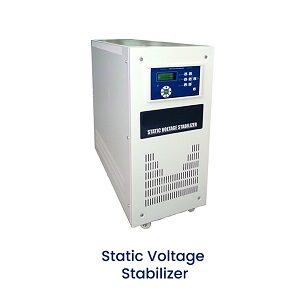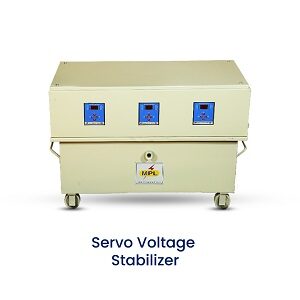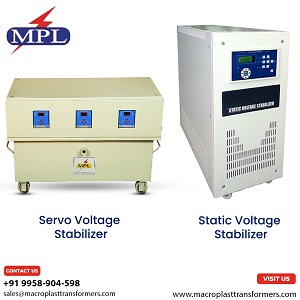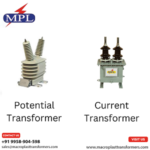Servo Stabilizers and Static Stabilizers are the most prominent models of stabilizers that are used in miscellaneous applications. People generally get confused between these two types of stabilizers. These electric devices are mandatory to be used in plenty of applications.
Servo Stabilizer is used to prevent the issue of voltage conditioning means the voltage rises and dips often appear in offices, houses, malls, power plants or industries. Sudden shocks, over and under voltages, and short circuits are other examples of voltage conditioning.
Read on to find the differences Between Servo Stabilizers and Static Stabilizer
Static Voltage Stabilizer

A Static Stabilizer is also known as a Static Voltage Stabilizer (SVS). It is an SMPS type of stabilizer. It means a stabilizer for AC input and AC output. Unlike a servo motor in the servo stabilizer, static stabilizers do not have any components that move.
Instead, a static stabilizer comes equipped with an electronic circuit based on the Insulated-Gate Bipolar Transistor (IGBT) mechanism for controlling voltage. These electrical devices do also have microprocessors and buck boost transformers. The function of a static stabilizer is to correct voltage fluctuations.
In addition, these stabilizers pack with a new switching topology where the PWM is performed directly in AC- to-AC switching, without causing any harmonic distortions. With the topology, the need for converting the AC into DC and then again DC to AC input is eliminated.
The new topology in static stabilizers allows simple design by lowering the component count which improves efficiency and reliability.
Servo Votage Stabilizer

A servo voltage stabilizer is a type of electrical device used to stabilize the voltage and protect your expensive electrical equipment. Typically, 230V to 415V range for single or three phases are the required electricity distribution.
A Servo Stabilizer has a servo motor controlled stabilization system that allows the perfect voltage supply to the electrical appliances.
- Buck or Boost transformer booster is used to capture voltage fluctuations from the input source
- It regulates the current to the correct output level
- It is a closed-loop control instrument that maintains the balance of the 3 or single-phase voltage output
The most important component of a servo stabilizer is the servo motor that rotates in a clockwise and anticlockwise direction to maintain the voltage fluctuations. A buck-boost transformer and a variable transformer in the servo stabilizer assist servo motors in regulating and stabilizing the voltage levels. Thus, servo voltage features control the constant voltage fluctuation and keep the voltage under control. It can automatically maintain a constant level of voltage for our electrical appliances.
Major Differences between Servo Stabilizers and Static Stabilizers
There are many differences between these two products.
Operation Dependency
Servo stabilizers come with an autotransformer for increasing or decreasing the level of voltage on the basis of primary and secondary windings. This leads to controlling the movement of a shaft that lets the servo voltage rotate to control the voltage. So voltage stabilization depends on the servo motor.
In contrast, the voltage correction solely depends on the IGBT power stage for voltage correction.
Working Principle
Servo mechanism is the working principle of service stabilizers. The clockwise and anticlockwise movement due to the servo motor corrects the voltage imbalance in servo stabilizers. On the other hand, static stabilizers function based on IGBT technologies and microprocessors for regulating voltage control. The reliability of servo voltage stabilizers is higher than that of static stabilizers.
Protection Level
The static stabilizers are designed to have advanced technology like digital signal processors that help automatically sense the voltage fluctuation and correct it. It leads to protecting the appliances from short circuits and overcurrent. There is no need for any additional components, such as MCB or MCCB.
Sound Differences
Servo stabilizers sound more than static stabilizers. This is the reason that static stabilizers are right for indoors and outdoors as well. While choosing a stabilizer for indoor applications, check the sound level of the product.
Size of Stabilizer
In size, static voltage stabilizers are much more compact than that of their servo counterparts.
Correction Time & Speed
20-30 milliseconds is the minimum correction time of static stabilizers. They offer a very high correction speed of 360-500V/s. On the contrary, servo stabilizers offer a correction time of 50 milliseconds to 5 seconds with a voltage correction speed of 100V/s.
Conclusion
These are the common differences between a servo stabilizer and a static stabilizer. Both of these electrical devices have their own importance. And their demand is always high in the market. For a reliable and guaranteed stabilizer, you can trust Macroplast Transformers which is one of the trusted Servo Voltage Stabilizers Manufacturers & Suppliers in India, Tanzania & EU countries. Always choose a product from a reputed brand.



